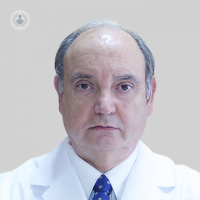Know what are cerebrovascular diseases and how to address
Written by:Cerebral vascular pathology or cerebrovascular disease is one that affects the intracranial blood vessels. We have a vascular network well developed enough so that from the cranial base, reaches the far cortex. This is done through multiple bifurcations leading to ever smaller vessels ending in the furrows of the cerebral convolutions, with a size of few millimeters. In addition, there communicating arteries artery linking networks of both cerebral hemispheres, forming the cranial base the circle of Willis.

Pathologies that fall within cerebrovascular diseases
The most common brain artery diseases are:1) Malformativas. S are the aneurysm and arteriovenous malformations. In this type of cerebral vascular pathologies involvement of the arterial wall it occurs in the middle and outer layer.2) Degenerative. Atherosclerosis is the. Involvement of the arterial wall occurs in the inner layer, with partial or complete obstruction of the arterial lumen, arteriosclerotic deposition material.
Symptoms of cerebral vascular disease or cerebrovascular disease
The malformativas vascular pathologies are evident in middle age with cerebral hemorrhages of different intensity. Causing symptoms are acute and severe headache that is accompanied by varying degrees of altered consciousness and may even be sudden death. The most common is the subarcnoidea bleeding, which usually occurs without serious signs accompanying nerve, allowing the patient to be transferred to a hospital so that he can urgently make the necessary radiological examinations and administer the appropriate treatment.Degenerative vascular diseases are more typical of the elderly, and manifested by ischemic events. Symptoms are headache associated with transient signs of neurological deficit (hemiparesis, dysphasia, etc.). If an intracerebral hematoma occurs neurological deficit will be more severe and alteration of consciousness to coma.
Specialists involved in the treatment of cerebrovascular diseases
Currently the treatment of cerebral vascular disease in the major centers carried out by an interdisciplinary unit formed by neurologist, neuroradiologist and neurosurgeon neurosurgeon, plus ICU and rehabilitation.
The consensus among specialists determines the type of treatment to be administered. Expert Neurosurgery is essential in cases where there has been a hematoma that produces a significant shift of neural structures through the midline, which is synonymous with death within hours.
Aneurysms fall within the field of interventional neuroradiologist, endovascular treatments by using coils or stents, to exclude the aneurysm from the bloodstream. However, this exclusion neurosurgeons performed through a craniotomy, closing the aneurysm neck outside the artery, through clips. Brain AVMs are within the field of precise neurosurgeon often support neuroradiologist and / or radiocirujano, for the most complicated cases.
Are the results are favorable?
Cerebral vascular disease is the leading cause of death in women and second in men. In addition, survivors left with varying degrees of disability, which is an important for their families and a huge spending on health problem.
The results of treatment of aneurysms and arteriovenous malformations have improved in recent years due to the perfection of the techniques of microscopic surgery, anesthetic advances and ICU care.
Patients with degenerative vascular disease have benefited from the establishment of stroke units in large hospitals. These units centralize this type of symptomatic patients of brain impairment and, in a few hours, they undergo radiological investigations that lead to a diagnosis and urgently, you are given a medical or endovascular treatment. Such rapidity in treatments has not only mortality but also decreased the severity of the potential consequences, having reduced the group of patients after a stroke, they are in a situation of permanent dependency.
Edited by Patricia Crespo Pujante


